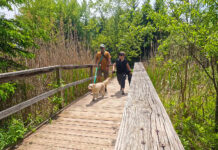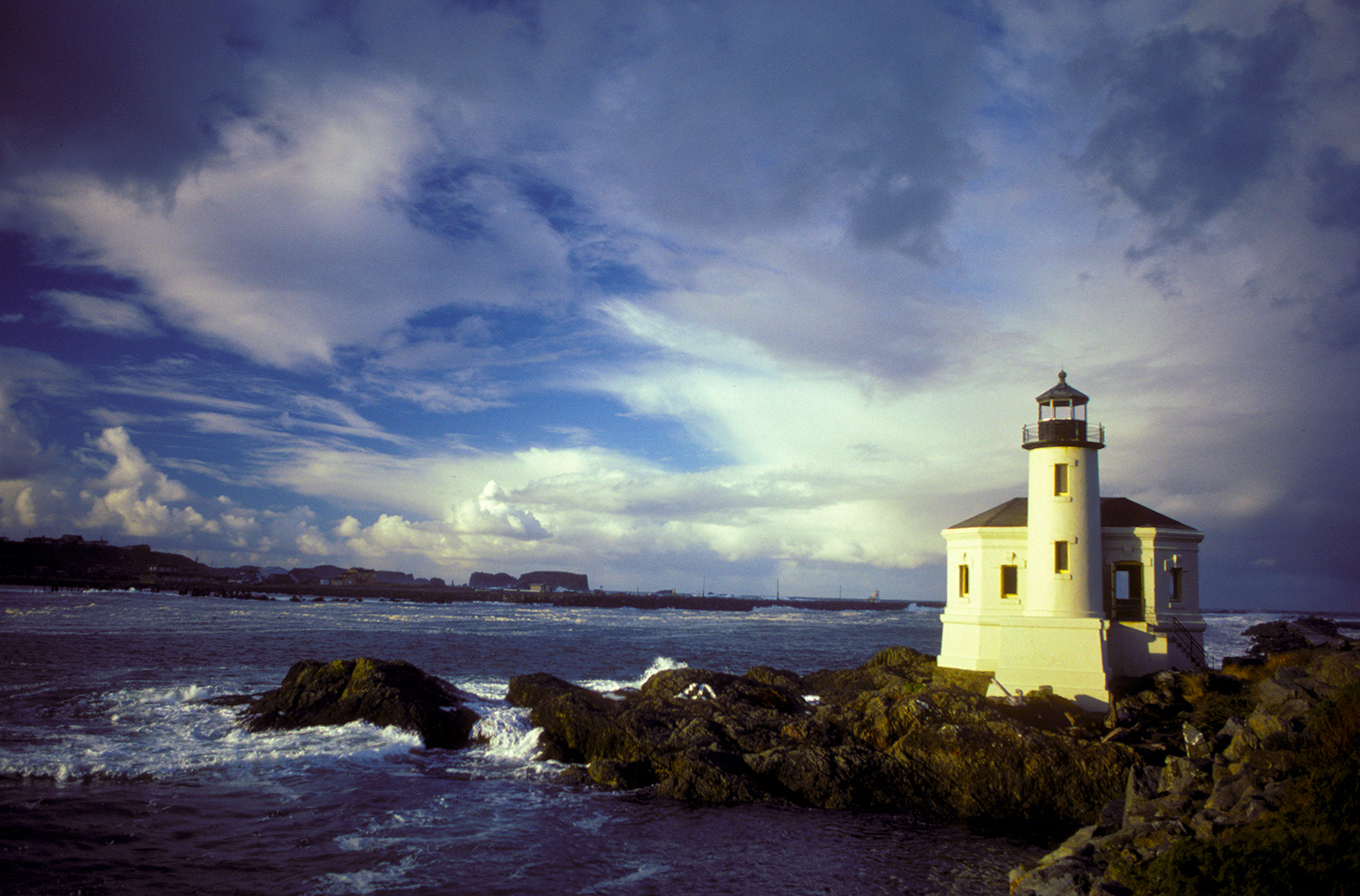The coast of Oregon is as much a signature of the state as a Douglas fir or a raindrop.
By Rhonda Ostertag
Photography by George Ostertag
The coast of Oregon is as much a signature of the state as a Douglas fir or a raindrop. Here you will find a beautiful, accessible shoreline that stretches for 350 miles (563 km) and encompasses bold headlands, long sandy strands, picturesque sea stacks, pastoral backdrops, sea lion rookeries and seabird nesting sites. Some ninety state parks and waysides, together with local and federal lands, throw open the gate, inviting the public to squeeze the sand between their toes and taste the salt spray. No other state in the U.S. compares in public offering.
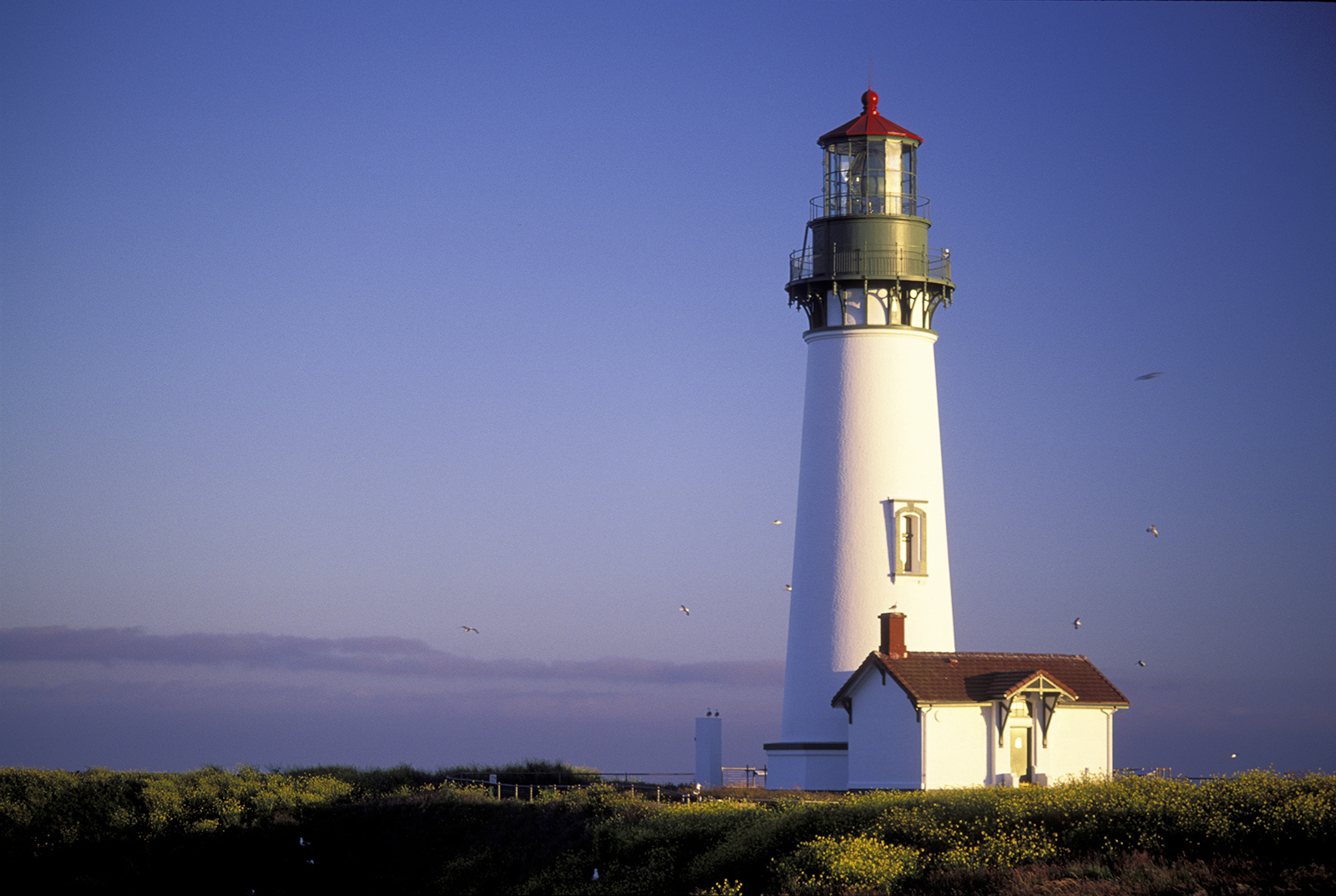 Tales of shipwrecks, Spanish treasure and ghosts spark the imagination. Renowned explorers Lewis and Clark wintered on the northern Oregon coast. The patterned blinks of lighthouses and forlorn moans of foghorns lend to the spell, as do fishing boats departing harbours in the predawn hours. A calendar chocked full of festivals celebrating coastal life and the elements can spice up a stay. Civilized hearts can enjoy the artists’ colonies, museums and aquariums.
Tales of shipwrecks, Spanish treasure and ghosts spark the imagination. Renowned explorers Lewis and Clark wintered on the northern Oregon coast. The patterned blinks of lighthouses and forlorn moans of foghorns lend to the spell, as do fishing boats departing harbours in the predawn hours. A calendar chocked full of festivals celebrating coastal life and the elements can spice up a stay. Civilized hearts can enjoy the artists’ colonies, museums and aquariums.
The ocean mirrors the weather and can be as striking blue as the sky, or as mysterious as the fog. The coast is open for four-season touring but in winter keep the umbrella and rain suit handy. Most visitors choose summer for their frolic and fun. But summer temperature inversions can summon ashore coastal wind and fog, raising goose bumps and sweatshirt sales at local tourist shops. Spring and fall are often the best times to visit. Gray whale migrations parallel shore then. If you think directing your spouse into a back-in RV space is challenging, try pointing out the disappearing back or momentary spout of a gray whale on the open sea.
Camping opportunities vary from rustic forest service campgrounds to resort RV parks. State park campgrounds provide a happy medium for comfort and convenience.
On the Oregon coast, it is difficult to make a poor travel decision, but the following suggestions will help steer you toward a happy sojourn.
Astoria
At the northern reach of the Oregon coast is Astoria, site of the first Northwest settlement west of the Rockies. Arrival is via either US Highway 30 from Interstate 5 or the grand arc of the Astoria-Megler Bridge spanning the Columbia River. Columbia Bar, where the great river meets the sea, claimed 120 ships in a 150 year period, earning the nickname “graveyard of the Pacific.” Astoria’s Columbia River Maritime Museum relates such tales of the high sea and has fine exhibits.
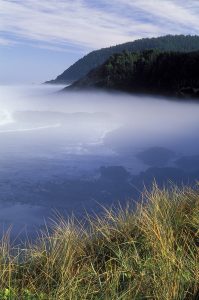 Astorian history traces to the coastal Indians who helped Lewis and Clark and the 1811-settlement of John Jacob Astor’s Pacific Fur Company. Fur trading, logging, shipping, fishing and canning have shaped the town’s character. Looking out at sea, graceful Victorian homes staircase the hillside. Waterfront attractions are a fishermen’s memorial, barking sea lions and cruise liners. Riverfront Trolley, a restored 1913 streetcar, offers convenient cross-town travel.
Astorian history traces to the coastal Indians who helped Lewis and Clark and the 1811-settlement of John Jacob Astor’s Pacific Fur Company. Fur trading, logging, shipping, fishing and canning have shaped the town’s character. Looking out at sea, graceful Victorian homes staircase the hillside. Waterfront attractions are a fishermen’s memorial, barking sea lions and cruise liners. Riverfront Trolley, a restored 1913 streetcar, offers convenient cross-town travel.
Atop Coxcomb Hill rises the 125-foot Astoria Column, a scroll painted on the tower exterior unfurls history. The interior holds 164 stairs leading to a balcony view that overlooks the Pacific Ocean, Coast Range, and Cascades, including Washington’s Mounts Rainier and St. Helens. Also on this hilltop is the burial-canoe memorial to Chinook Chief Comcomly, who befriended Lewis and Clark.
In coastal forest southwest of town, Fort Clatsop National Memorial, part of Lewis and Clark National Historical Park, commemorates where the duo wintered on the Oregon coast before their return east. Museum exhibits, journal entries and living history demonstrations enliven the story. A replica fort, which had stood on the site since 1955, fell to fire October 2005, just months before the bicentennial celebration. But tragedy has escorted in opportunity for archaeological digs and new attention to historic detail that will guide the building of the 2006-fort replica that will oversee the next hundred years.
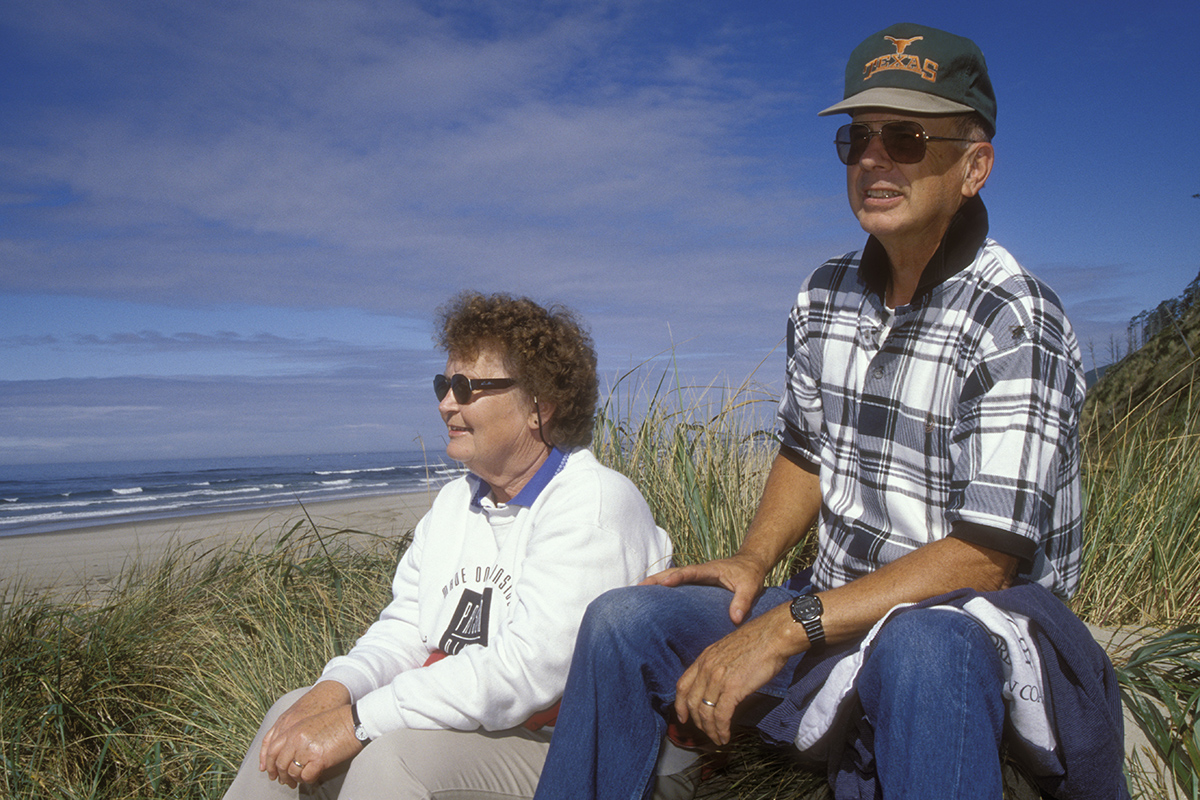
There are many ways to count down the miles south on US Highway 101, the Pacific Coast Scenic Byway: beaches, towns, lighthouses, bridges or rolls of spent film. Tillamook, famous for cheese, unites dairy cow pastures and stunning cliff and beach shores. Three Capes Scenic Drive, west off US 101 at Tillamook, takes travelers past Cape Meares, Cape Lookout and Cape Kiwanda State Parks. A lighthouse, wooded headland and hang-glider bluff are their respective offerings.
Lincoln City, the spaghetti-like town that incorporates five former beach communities, is known for its spring and fall kite festivals and the winter hiding of blown-glass floats on its beaches. To its south sits Depoe Bay, where fishing and whale watching charters enjoy a quick hop to the open ocean through the world’s smallest port.
Newport
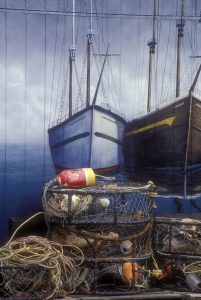
Newport’s waterfront smacks of the sea with its circling gulls, barking sea lions, ships and old warehouses. Eclectic shops, a series of marine-inspired murals and an inviting seawalk add to bay front strolls. Sandals, as well as fishing boots, plod the boards. Some mural images draw you into the battle of the sea or the longing on the home front. Other murals seemingly spill off the walls and into the street, where stacked crab pots continue the tale. Images can measure 100 feet long and 35 feet high. A steamy cup of clam chowder at Mo’s can erase the chill of a misty day.
Across the bay, Oregon Coast Aquarium and Mark O. Hatfield Marine Science Center offer windows to the sea. Also on Newport’s roster is a pair of lighthouses: the misplaced Yaquina Bay Lighthouse, complete with ghost story, and the 1873-Yaquina Head Lighthouse, at the north end of town. It shines over Yaquina Head Outstanding Natural Area. Off Yaquina Head sits Colony Rock, a nesting site with standing room only for thousands of murres, cormorants, and pigeon guillemots. Gray whales are passersby.
Cape Perpetua Scenic Area
The tiny town of Yachats heralds in one of Oregon’s more spectacular rock-and-sea clashes and serves as gateway to Cape Perpetua Scenic Area. At the town’s Smelt Sands State Recreation Site, fingers of jet-black basalt confront the sea’s white fury in spraying spectacle.
Cape Perpetua, named by Captain James Cook in 1778, encompasses rugged headland, wild coast, forest and 22 miles of hiking trail. The summit’s Whispering Spruce Trail rounds up two stonework vantages built by the Civilian Conservation Corps. Summit views sweep 150 miles of coastline from Cape Foulweather to Cape Blanco. Shoreline attractions: Devils Churn, Cooks Chasm, and Spouting Horn live up to their provocative names.
Heceta Head
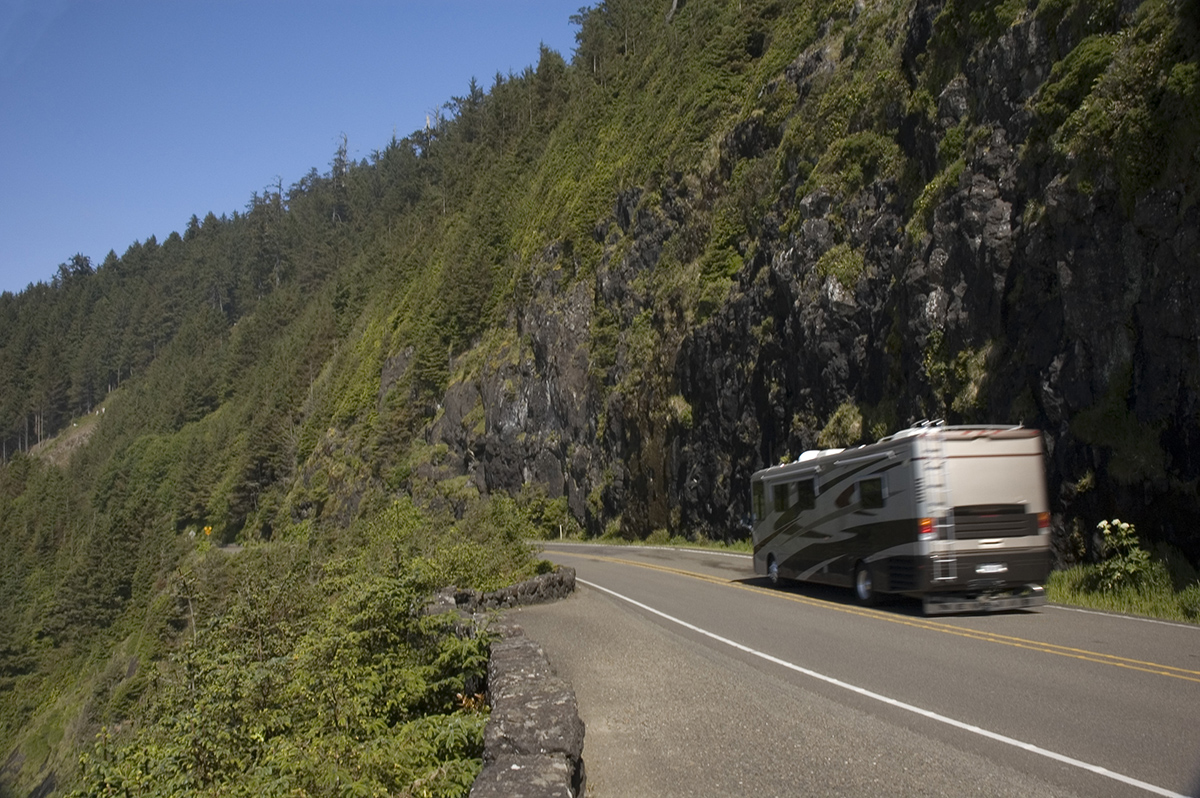
The signature flash of Heceta (Ha-see-tah) Head Lighthouse, the brightest on the Oregon coast, beckons travelers farther south. The headland wears the name of Don Bruno de Heceta, who sailed past here in 1775. This lighthouse is the most photographed one in the state. Two-hundred–foot cliffs, the rocky cove of Devils Elbow and sea-battered Conical and Parrot Rocks shape the light’s domain. The associated Queen Anne–style light keeper’s house doubles as a visitor center and bed and breakfast. According to folklore, an amicable ghost roams the Keeper’s House. Identified by a reliable Ouija board as “Rue,” she is thought to be the wife of an 1890’s assistant keeper.
The lighthouse stands sentry to another of Oregon’s popular attractions, Sea Lion Caves, a privately owned mainland sea lion rookery. Raucous barks of Steller sea lions announce its nearness. According to owners, this 12-story- high cavern spans the length of a football field, providing plenty of room for the weighty beasts. An elevator sinks 208 feet to the cave floor for viewing. Smaller, more common California sea lions frequent docks and waterfronts. Harbor seals sun on isolated rocks.
Oregon Dunes National Recreation Area (NRA)
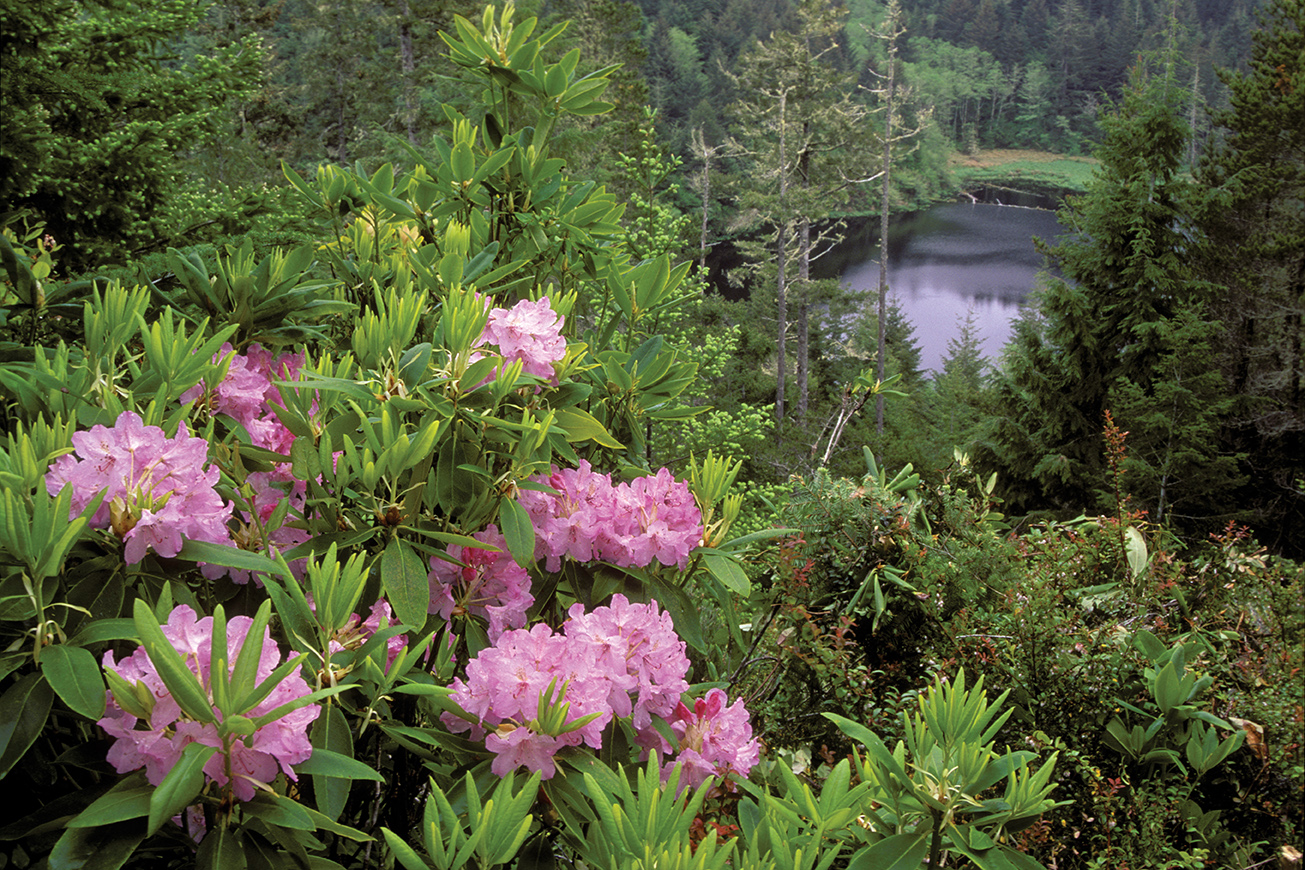
The shifting sands and ocean shore of Oregon Dunes NRA extend 50 miles along the central Oregon coast between Florence and Coos Bay. Whether excitement means shooting over the dunes on an all-terrain vehicle, riding horseback in the surf, hiking to the top of a wilderness dune or jumping aboard a cardboard sled for a rip-roaring ride, this gigantic playground fills the order.
The dunes began 7,000 years ago. Sand worn away from the interior mountains rode the rivers to the sea, where currents distributed the deposits along the coast. Bulldozing wave action at the end of the last Ice Age then pushed the sand to shore, where centuries of wind have finessed the landscape. The result: curvaceous dunes up to 400 feet tall.
Cedar trail-posts guide hikers across the loose sand to the beach. The NRA incorporates natural areas, as well as its roaring vehicle areas. Dune vehicles can be rented at nearby towns.
Bandon
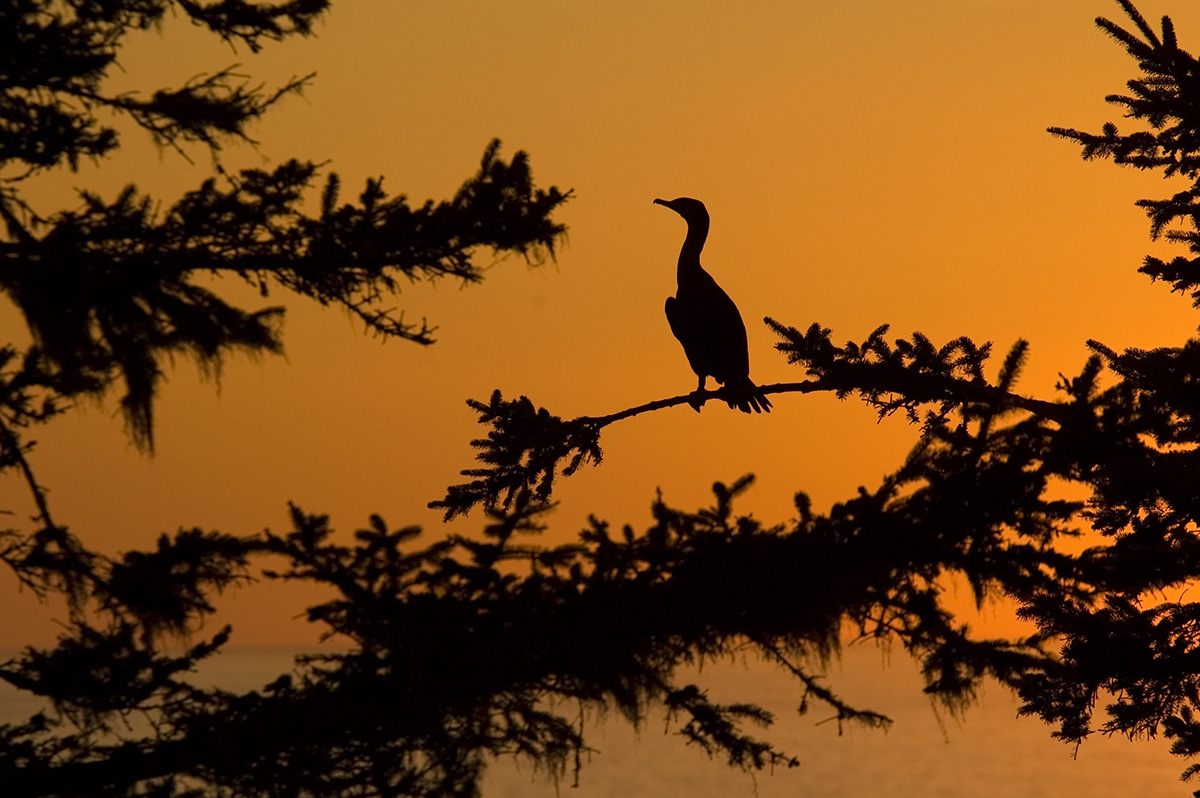 Bandon boasts an attractive port, old-town shopping district and picturesque shoreline accented by sea stacks. Fish-and-chip stands along the waterfront invite you to eat along the boardwalk or duck into the attractive shelter there. Cranberries, a staple of the area, contribute to gift box treats. Bullards State Beach, north of town, offers camping, an extensive day-use area and the photogenic Coquille River Lighthouse. While lightly trammeled beaches can be found most anywhere on the Oregon coast, the remote southern beaches are even more lonesome. For golfers, Bandon Dunes Golf Course combines top-notch links with coastal sensations and views. It draws competitive caliber players from across the nation.
Bandon boasts an attractive port, old-town shopping district and picturesque shoreline accented by sea stacks. Fish-and-chip stands along the waterfront invite you to eat along the boardwalk or duck into the attractive shelter there. Cranberries, a staple of the area, contribute to gift box treats. Bullards State Beach, north of town, offers camping, an extensive day-use area and the photogenic Coquille River Lighthouse. While lightly trammeled beaches can be found most anywhere on the Oregon coast, the remote southern beaches are even more lonesome. For golfers, Bandon Dunes Golf Course combines top-notch links with coastal sensations and views. It draws competitive caliber players from across the nation.
The Oregon coast is a bottomless trove – sample deep, and put together your own cache of treasured memories!










